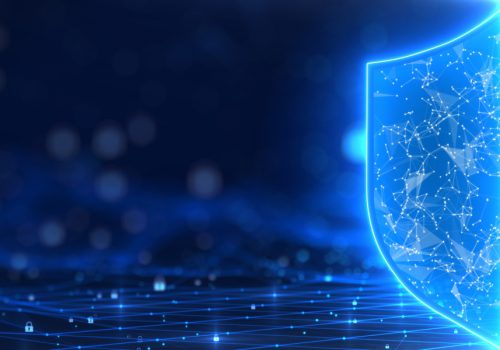The surge of digital transformation and the explosion of cyber threats have rendered traditional perimeter-based security models obsolete. Zero Trust Architecture (ZTNA – Zero Trust Network Access) has emerged as a cornerstone of modern cybersecurity strategies. When combined with the requirements of ISO/IEC 27001:2022, it dramatically enhances governance, compliance, and organizational resilience against evolving threats.
This article explores how to adopt a Zero Trust approach while ensuring alignment with international cybersecurity standards. To remain competitive in the data-driven economy, it is crucial not to isolate data assets. Connecting data with various services, partners, integrations, and other datasets enables new processes, such as federated learning.
In order to fully leverage the benefits of AI, securing your data, whether inside or outside your information systems, becomes imperative. Zero Trust has evolved into an essential security strategy and a vital component whether applied enterprise-wide as a major initiative or integrated into smaller, targeted projects.
Operating in a Threat Ecosystem
Cyber-attacks are growing more frequent, widespread, and sophisticated, driven by the rapid evolution of cybercrime. The collaboration between nation-state actors and financial criminals has intensified the scale and complexity of threats, creating significant challenges for defenders.
To reduce the cost, time, and skills needed to launch attacks, cybercriminals are increasingly leveraging artificial intelligence (AI). AI now enables the automation of attacks, generation of malware, deepfakes, and other techniques that exploit vulnerabilities at unprecedented speeds.
According to a Microsoft study:
- 4,000 password attacks occur daily, reaching up to 579 per second by 2021.
- There was a 200% increase in human-operated ransomware attacks between 2022 and 2023.
- The cost of data breaches reached $9.22 billion in 2024, and is projected to rise to $13.82 trillion by 2028.
How Can a Zero Trust Approach Provide Optimal Protection Against These Threats, Beyond Traditional Perimeter Defenses?
Zero Trust is not a product, technology, or tool. It is a cybersecurity philosophy that assumes every user, device, or request may pose a threat until proven otherwise, and treats every transaction with strict scrutiny. It is a simple yet powerful concept.
A Zero Trust approach requires defenders to act accordingly, even when data, users, or devices have been previously identified or are located within what was traditionally known as the “trusted zone.” Keeping these assumptions in mind, a Zero Trust security model must adhere to three key principles:
Never Trust, Always Verify
Every access request must be authenticated, authorized, and validated — regardless of its origin, whether internal or external to the network.
Apply the Principle of Least Privilege
Users, devices, and applications are granted only the minimum access necessary to perform their functions.
Ensure Continuous Monitoring
User and system behavior must be continuously monitored, with access rights dynamically adjusted based on risk signals.

Aligning the Implementation of Zero Trust Architecture with ISO/IEC 27001
Zero Trust Architecture is based on the fundamental principle of “never trust, always verify.”
Its implementation must be aligned with the requirements of ISO/IEC 27001, which provides a comprehensive framework for information security management.
ISO/IEC 27001:2022 offers a robust methodology for managing information security risks by establishing an Information Security Management System (ISMS).
Why Is ISO/IEC 27001:2022 Essential?
Adopting Zero Trust enables organizations to:
- Structure governance based on identity and access management.
- Strengthen compliance with access controls.
- Enhance resilience against targeted threats.
When combined, Zero Trust and ISO/IEC 27001 allow organizations to:
- Prevent most lateral movements within systems.
- Respond faster to security incidents.
Increase customer trust through certification and advanced protection.
Key Elements for Implementing the Zero Trust Model in Compliance with ISO/IEC 27001
1. Asset Mapping and Scope Definition
ISO/IEC 27001 – Annex A.8 (Asset Management)
- Identify all critical assets (e.g., applications, data, users, endpoints, servers, networks).
- Classify assets based on their sensitivity and criticality.
- Maintain an asset register and assign responsible asset owners.
Zero Trust
- Apply strict segmentation of assets according to their sensitivity and access requirements.
- Enforce the principle of least privilege to restrict resource access to the minimum necessary.
2. Identity and Access Management (IAM) with Strong Authentication
ISO/IEC 27001 – Annex A.9 (Access Control)
- Implement a strict access management policy.
- Apply Role-Based Access Control (RBAC) or Attribute-Based Access Control (ABAC).
- Require Multi-Factor Authentication (MFA) for sensitive access points.
Zero Trust
- Use an advanced IAM solution with SSO, MFA, and federated identity management.
- Continuously verify user identity throughout sessions.
- Strengthen anomaly detection with User and Entity Behavior Analytics (UEBA) tools.
3. Micro-Segmentation and Network Security
ISO/IEC 27001 – Annex A.13 (Communications Security)
- Separate different environments (e.g., production, testing, development).
- Encrypt both internal and external communications (e.g., VPN, TLS, IPSec).
- Deploy next-generation firewalls (NGFW) and threat detection solutions (IDS/IPS).
Zero Trust
- Implement network micro-segmentation with SD-WAN or ZTNA technologies.
- Deploy a network access model based on context (endpoints, user behavior, or device posture).
- Continuously validate network connections for each session.
4. Securing Endpoints and Workstation Control
ISO/IEC 27001 – Annex A.12 (Operations Security)
- Deploy patch management and update solutions.
- Implement antivirus and Endpoint Detection and Response (EDR) systems on workstations and servers.
- Enforce application control strategies (e.g., whitelisting, blacklisting).
Zero Trust
- Strengthen endpoint security with EDR/XDR solutions.
- Implement compliance verification before granting access to any resource.
- Deploy conditional access control based on the workstation’s risk level.
5. Continuous Monitoring and Incident Response
ISO/IEC 27001 – Annex A.16 (Information Security Incident Management)
- Deploy a Security Information and Event Management (SIEM) solution to centralize logs and monitor security events.
- Develop incident response plans and conduct simulation exercises (e.g., Red Team, Purple Team).
- Establish a Security Operations Center (SOC) to detect and respond to threats in real time.
Zero Trust
- Apply advanced behavioral threat detection (e.g., UEBA, Threat Intelligence).
- Implement continuous, real-time risk analysis.
- Integrate a Security Orchestration, Automation, and Response (SOAR) platform to automate incident responses.
6. Securing Data and Managing Access Rights
ISO/IEC 27001 – Annex A.14 (System Acquisition, Development, and Maintenance Security)
- Encrypt data both in transit and at rest.
- Implement file access rights management.
- Deploy Data Loss Prevention (DLP) solutions to detect and prevent data leaks.
Zero Trust
- Implement data classification to apply contextual access policies.
- Apply granular encryption with encryption keys adapted to each access level.
- Monitor and control user activities on sensitive data.
Automation and Continuous Improvement
ISO/IEC 27001 – Annex A.18 (Compliance and Continuous Improvement)
- Conduct regular audits to evaluate compliance with Zero Trust requirements.
- Define security KPIs to measure the control effectiveness.
- Raise employee awareness regarding secure authentication and cybersecurity best practices.
Zero Trust
- Automate access management and Zero Trust policy enforcement.
- Integrate AI and Machine Learning tools to detect abnormal behaviors.
- Establish a continuous review process for access rights and configurations.

How Zero Trust Enhances AI
- Protection of AI Models: Zero Trust restricts access to sensitive datasets used for algorithm training.
- Anomaly Detection: Real-time behavioral analysis allows for rapid detection of unusual access to AI models.
- Integrity of Results: By verifying the authenticity of users and data flows, AI outputs remain reliable and unaltered.
How Zero Trust Strengthens Compliance and Governance
- Increased Auditability: Each access decision is logged, providing complete traceability, essential for ISO/IEC 27001, GDPR, or DORA.
- Risk Reduction: Less privilege means less attack surface.
- Dynamic Governance: Access can be automatically managed based on context, such as location, device, or time.
The integration of the Zero Trust Architecture with ISO/IEC 27001 is based on a progressive and strategic approach, covering identities, networks, endpoints, data, and continuous monitoring. By applying this methodology, organizations can ensure both optimal security and compliance with standards and regulations
Zero Trust, combined with the requirements of ISO/IEC 27001:2022, offers a modern and strategic vision of cybersecurity:
- More control
- More visibility
- Less exposure to risk
- Each Zero Trust brick meets a requirement of ISO/IEC 27001 Annex A
- Zero Trust boosts governance, AI, compliance and strengthens dynamic security spirit
In an increasingly uncertain digital world, this architecture is becoming an indispensable lever to combine innovation and trust.









